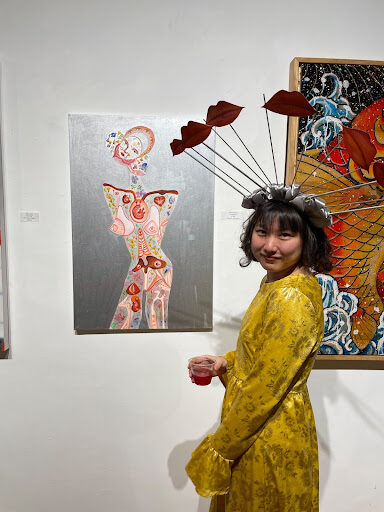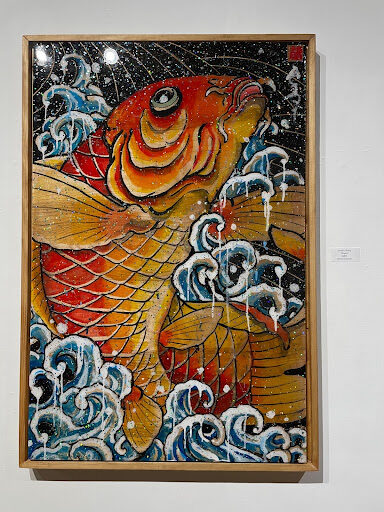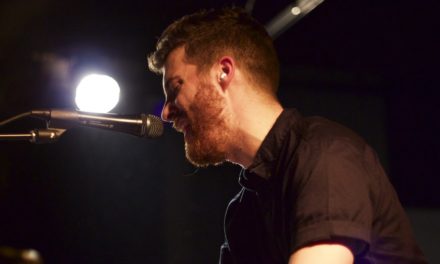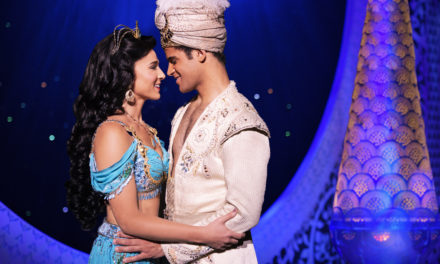The Bakery is decidedly one of my favorite art-related nonprofits in Atlanta, and I am earnestly excited to attend any and all events they host at their South Downtown Gallery location. They describe themselves as being in the business of “creating space,” a phrase that applies both to the physical embodied spaces at their exhibitions, but also the mental, emotional, energetic and artistic “spaces” that are formed when creatives come together.
The Bakery hosted an exhibition in their artistic space from Jan. 20 to 22 for Lunar New Year, which, in 2023, celebrates the beginning of the Year of the Rabbit, or in the Vietnamese and Gurung zodiacs, the Year of the Cat. In the vein of hope and prosperity that the rabbit indicates, the Bakery organized a three-day exhibition and art sale featuring Asian American and Pacific Islander (AAPI) Atlanta artists. The artists were encouraged to push artistic boundaries and societal expectations, with all ticket sale donations going to Red Canary Song, a non-profit working towards justice, labor rights, equity and safety for AAPI massage and sex workers. The impetus behind Red Canary Song was the death of an AAPI massage worker in Flushing, NYC that occurred during a police raid in 2017. It became apparent that sex workers did not have access to labor rights or collective organizing to advocate and protect themselves, with AAPI workers being even more so affected by immigration control and over-policing of these communities.
The exhibition was curated by Bakery team member and AAPI creative, Karina Teichert, who, according to the gallery description, wanted to “highlight the majesty of AAPI art” and “inspire future generations to take up space unapologetically.” Coming back to the power of space, the Bakery’s small gallery came alive with community members embracing themselves, instead of playing by the rules or fitting into prescribed boxes that the AAPI community has been forced into by the white American majority, both historically and presently. I could see AAPI queer folk being supported by their non-AAPI partners, college friends joyfully recreating a photo they had taken together five years ago and Bakery staff working hard to manage the sale of all the wonderful artwork made by AAPI artists.
The Bakery acts as a platform for self-expression and experimentation, evident in the variety of artworks, artists, sensory experiences and viewers present at the “Year of the Rabbit” exhibition. Upon entering the space, visitors were greeted with a warm, crowded entryway, followed immediately by a table selling a cold noodle dish and some tea. As the scent of ginger floated over the crowd, clusters of visitors admired crocheted hats, dumpling-shaped jars and artistic prints, all for sale.
Immediately following this exciting entryway was a second archway that siphoned visitors into the Bakery’s main gallery space, set up with a variety of artworks along the walls and a beautiful communal table in the center, covered in red tablecloths and ceramic jars. A large-scale artwork by Amberly Hui Hood, entitled “Peels,” hangs on the wall across from the table, and the label asks viewers to “PLEASE TOUCH.” As I tentatively reached toward the squishy, slime-like artwork, I could see clusters of friends and new acquaintances talking, admiring art, sharing drinks, laughing and making connections. People were taking photos while celebrating themselves, their friends and the artists who were present at the opening night of the show.
One such artist I had the privilege of meeting was Diana Lemons (22B), an Atlanta-based AAPI visual artist. She lit up the room with her vibrant, homemade nimbus crown adorned with painted red lips and golden, floor-length dress, both designed and made by her for this celebratory evening. Lemons proudly displayed two of her paintings and watched excitedly as people entered the space and reacted to her works, unaware that she was the artist. Her artworks represented the embodied, physical experience of pain being turned into something beautiful, like the delicate orchids that climbed up the humanoid outline of her self portrait.

Lemons in front of her artwork, “Self-Portrait.” (Zimra Chickering / Senior Staff Writer)
As Lemons described it, women experience bodily pain in a myriad of ways, an experience she has contended with throughout her life, but reclaiming those experiences as moments of growth and opportunities for unity, especially in the AAPI community at the start of a new year, is particularly important.
In that vein, embodied joy was felt, unbridled, in many of the artworks on display, including Nicole Kang’s “In my garden, there are flowers,” which centered an Asian parent kissing their young child as vibrant, verdant blooms of flowers exploded in the background, seemingly growing out of that act of love. Across from this painting was a multimedia work by Andrew Huang titled “Origins,” showing a brilliant yellow ochre koi fish exploding out of the wooden background, as curling, dripping waves wrapped around its scales. From prints to ceramic dishes to sculptures, every inch of the gallery walls were covered with eye-catching artworks.
As the Bakery always seems to achieve, this one-room gallery felt endless, as though I could stay there for hours, eating and drinking with friends and listening to the stories that each artwork seemed to whisper into the ears of each visitor walking past it. The variety of artworks and the beauty of all intersectional AAPI identities highlighted the fact that the AAPI community is not a monolith and should not be treated as such in artistic and social dialogues. Conversations of AAPI identity sat right alongside conversations of queer identity, gender-based oppression, relationships to food, bodily autonomy, the rights of sex workers and so much more.

Andrew Huang’s “Origins.” (Zimra Chickering / Senior Staff Writer)
The “Year of the Rabbit” exhibition was a prime example of celebrating AAPI joy, while also recognizing the systemic oppression and societal boxes that present barriers for AAPI artists in the art market. 2023, the Year of the Rabbit, is predicted to be a year of hope, and I cannot think of a better way to express that hope than through artworks such as these.
Zimra Chickering (24C) is a born and raised Chicagoan who studies art history and nutrition science. She is also a student docent for the Michael C. Carlos Museum, Woodruff JEDI Fellow, educational committee chair for Slow Food Emory, and Xocolatl: Small Batch Chocolate employee. Zimra loves cooking, visiting art museums, photography, doing Muay Thai, drinking coffee, and grocery shopping. She uses writing as an outlet to reflect upon issues and oppurtunities within artistic institutions, and the unique ways in which food and art can act as communicators of culture.





